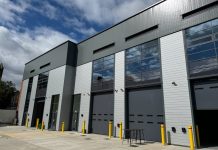Market demand for office space has changed rapidly over the past 12 months with a real shift in favour of the end user, which will drive long-lasting change to the workspace sector.
Demand in secondary and tertiary locations across the UK has increased rapidly under lockdown. And with the corporate footprint of the future becoming more dispersed across diverse locations, we will see those markets produce a different level of quality and variety in workspace in the future.
However, flex workspace is still less than 4% of the total UK office market. An increase in demand for CRE clients looking to increase flex as a proportion of their portfolios will lead to landlords expanding flex provision and operators taking new approaches to extend supply to new locations. Instant’s research suggests that flexible workspace will hit 12.5% of total office supply by 2023 driven by increased corporate demand, and landlords responding to this.
John Duckworth Head of UK and EMEA at the Instant Group, said: “This year has been challenging, but as we head into 2021 there is a real sense of change happening in the office market. By its nature, flexible workspace offers occupiers agility, both key factors for businesses as they reassess their real estate requirements in the ‘new normal’.
“It will be a bumpy ride as the first half of 2021 looks set to be very difficult for all elements of the office market. But the sales pipeline for agile workspace is growing as demand from businesses of all sizes increases, and in the second half of the year, this will lead to more deal activity and a shift in gear for flex, in particular.”
Before Covid-19 hit, supply in the flexible office industry was increasing at a rapid pace, with a growth of 11% throughout 2019. Although widespread disruption caused this to slow during the first half of 2020, top markets in the UK have continued their growth resulting in an overall 4% growth rate.
While London’s share of the flex market was up to 31% in 2020 in terms of supply of centres, this balance is now shifting in favour of suburban markets as their popularity increases with employees opting to work closer to home.
Instant’s research team is forecasting flexible workspace supply growth of over 21% in 2021 and a greater variation of end product than ever before as occupiers move towards more agile solutions for their office requirements.
“Some more innovative flexible space providers have been quick off the mark, spotting the long-term opportunities in the market and actively seeking more suburban locations to expand as demand continues to climb,” explained John Duckworth.
“The workspace sector in general must recognise the change in mood from occupiers as well as the growth of demand from new sectors such as life sciences and biotech, which will require a new approach to space in different markets.”
Instant has surveyed more than 70 senior in-house commercial clients, 75% state that they will be reducing CAPEX on workspace in the next year. The office market will have to produce more solutions that reduce the reliance on significant upfront investment from the client.
The corporate drive for agility will create competition in the office market and greater choice. And Landlords will need to adopt more innovative deal structures on shorter terms to compete with agile flexible workspace offers.



















